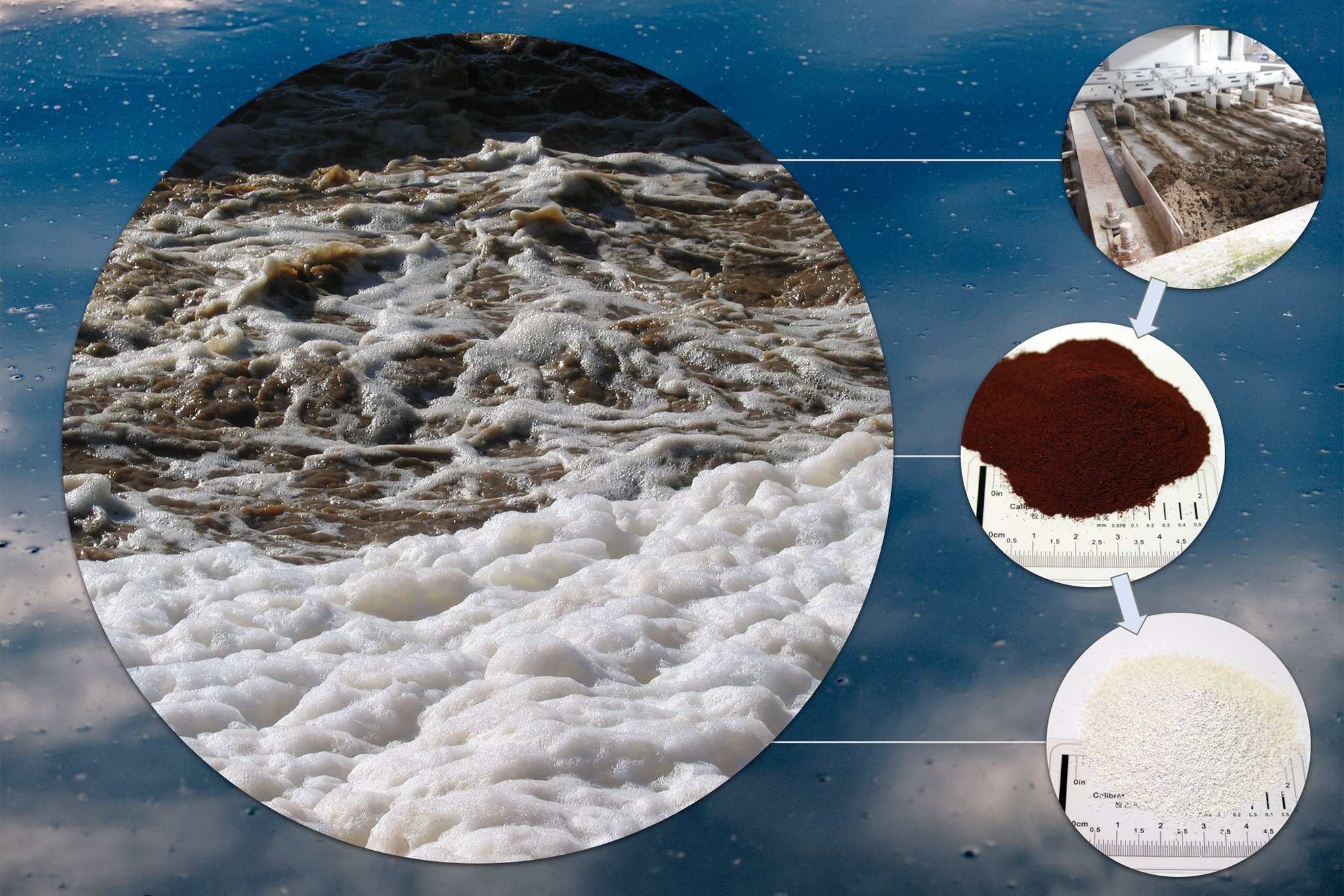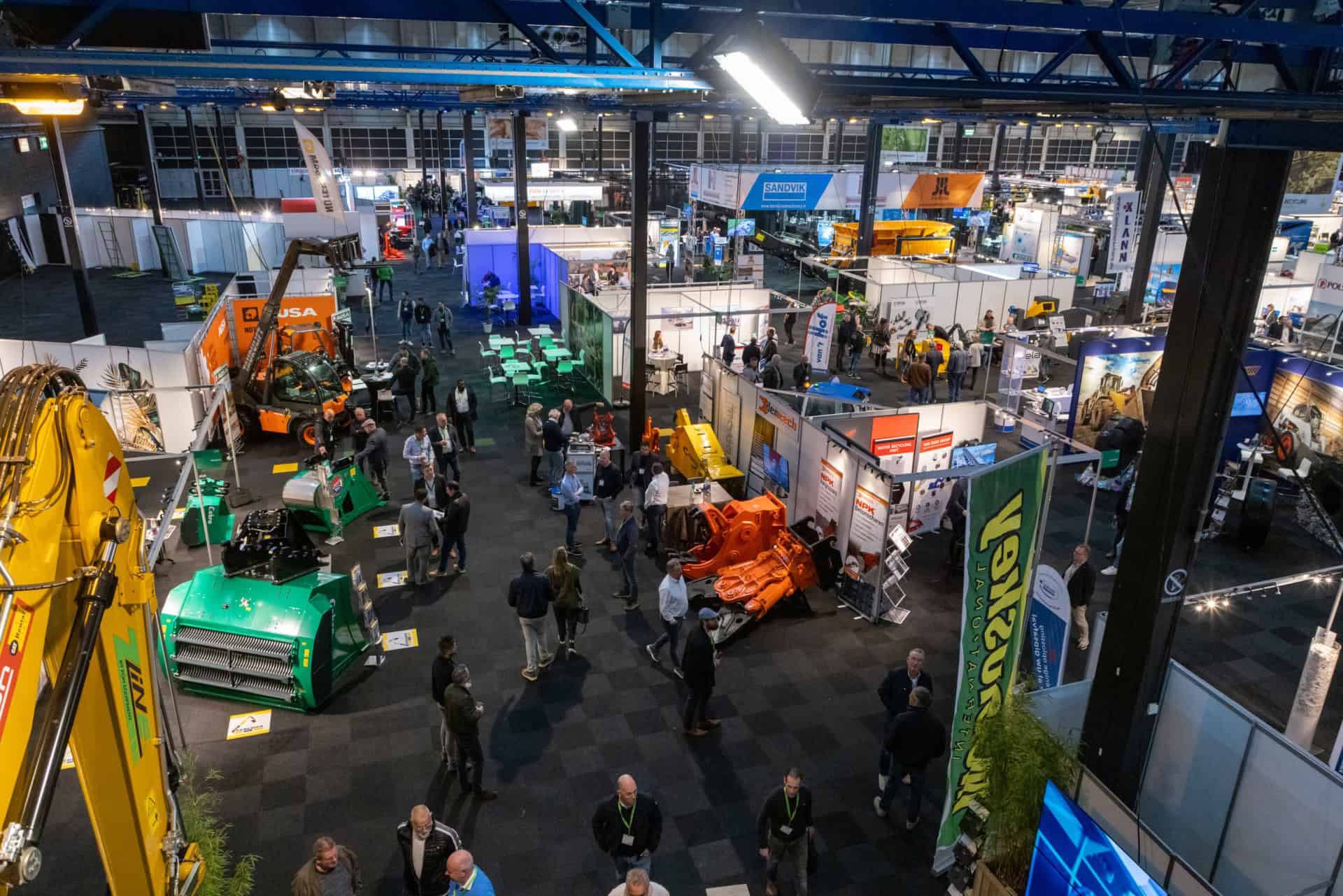
Phosphorus is a vital element for plants and animals. As a nutrient, it controls the energy balance in cells and influences the composition of hereditary DNA. As a fertilizer, it prevents deficiency symptoms in plants and has a positive effect on the soil. In the agricultural industry, phosphorus is used to achieve high crop yields. One consequence of this is a high concentration of phosphorus in wastewater – and thus in sewage sludge.
In Europe, phosphorus has to be imported. Minerals containing phosphate are mainly found in countries such as Africa, China and Russia. But resources are finite and industry complains of decreasing phosphorus concentrations in minerals, while exposure to undesirable pollutants such as the toxic heavy metals cadmium and uranium is increasing. This makes mining costly and is also problematic from an environmental perspective. If we recycled phosphorus locally, much of the environmental problems would be solved. Both the environmentally damaging mining and the transport route through importation would be eliminated.
Phosphorus in sewage sludge
How this could work was the subject of the StraPhos project, commissioned by the Austrian Federal Ministry of Agriculture, Forestry, Environment and Water Management (BMLFUW). A team led by Arabel Amann from the Institute of Water Quality Management at Vienna University of Technology, Austria, used sewage sludge to investigate how best to recover phosphorus domestically and from existing resources.
Also interesting: Sewage sludge and tree bark as sources for green gas production
In Austria, sewage sludge is still applied to fields as fertilizer. Negative effects are overlooked. “In addition to phosphorus, sewage sludge also contains microplastics, heavy metals, organic trace substances and antibiotic residues, which thus also end up on the field,” explains Amann.
There is no ideal procedure with regard to the environment because there is a trade-off between different environmental criteria. If the fertilizer is to have a high plant availability and a reduced heavy metal content, this also requires a higher use of chemicals and energy. At the same time, this higher input is reflected in the economics of phosphate recovery processes.
Processes for recovery
It would be easy to extract phosphorus directly in wastewater treatment plants. But this only produces a yield of about 40 percent. If sewage sludge is incinerated, the yield is significantly higher. In incineration, the sewage sludge is first dried, then burned, and the phosphorus is finally extracted from the ash. The existing processes are divided into co-incineration and mono-incineration. The former would be preferable from an energy point of view because sewage sludge has a very high water content and is not a good fuel. This changes with co-incineration, where sewage sludge is burned together with other waste. However, the quality of the ash usually changes, especially disadvantageous when the phosphorus content drops, Amann explains. After all, the phosphorus content in the ash is one of the driving factors for the economic recovery of phosphorus, she says. In mono-incineration plants, on the other hand, at least 80 percent of the phosphorus can be recovered from the sewage sludge.
Economic viability of recycled phosphorus
Amann’s team looked at factors such as production costs and sales prices and calculated how the costs would be distributed among Austria’s population per year. The basis was a scenario in which about 35 percent of the national phosphorus fertilizer demand is substituted by phosphorus from wastewater. It was shown that the costs of wastewater treatment could be reduced by one euro per inhabitant in the most favorable case. In the worst case, additional costs of five euros result.
If cost-effectiveness is to be achieved, high-quality ash and a good location are needed, preferably with a connection to the district heating network or heat consumers. Amann comments: “Heat from sewage sludge incineration is largely used in the drying of the sludge prior to incineration. In sensible concepts, a small amount of surplus heat is usually also generated. This should be fed into an existing district heating network.”
Sensible concepts usually also generate a minor amount of surplus heat, which should be fed into an existing district heating network.
Arabel Amann, Institute for Water Quality Management at the Vienna University of Technology
To reduce the relative cost per ton, the researchers recommend large plants with a potential of at least 30,000 tons of sewage sludge dry matter per year. It is also important to create a market for recycled fertilizer. After all, “the revenues will be a decisive factor for the economic viability of the processes,” says Amann.
Legal framework
At the EU level, the legal framework for recycling phosphorus from sewage sludge has already been created. With the expanded EU Fertilizer Products Regulation, novel fertilizers made from secondary raw materials such as sewage sludge have been approved for the market, Amann explains. In Austria, however, economic viability is still difficult because of low phosphorus prices and the lack of sewage sludge treatment infrastructure. A legal obligation for at least some Austrian plants to recover phosphorus would therefore be a basic prerequisite for the introduction of the circular economy in the phosphate industry. To avoid an excess of mono-incineration plants, the federal government and the federal states should cooperate in the development of supra-regional incineration concepts.
At the same time, it would also be necessary to define criteria for phosphorus recovery. For example, the researchers recommend recovering at least 80 percent phosphorus from sewage sludge ash, as this is achievable with currently available technologies. In addition, heavy metals should be at least partially removed from the ash to reduce their input into agriculture.






